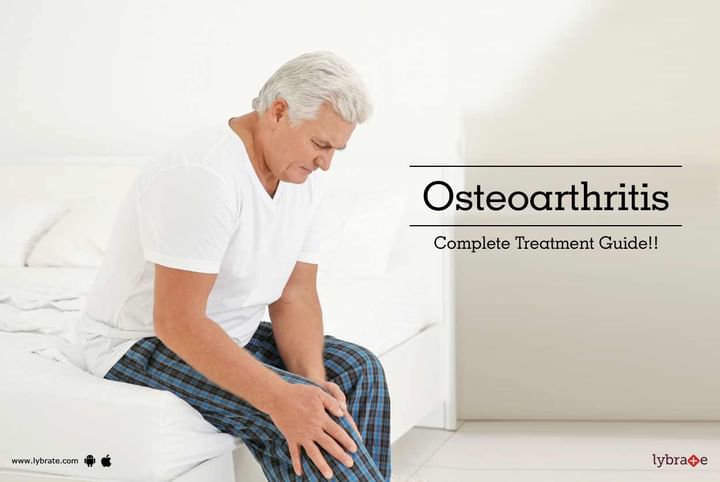Osteoarthritis Complete Treatment Guide!
Osteoarthritis is a Non Inflammatory disease that affects many joints, knee joint most common. In normal joint, a firm, rubbery material called cartilage covers the end of each bone. Cartilage provides a smooth, gliding surface for joint motion and acts as a cushion between the bones. In Osteoarthritis, the cartilage breaks down, causing pain, swelling and problems moving the joint. This disease, that mostly affects women, worsens over the time and should be treated as early as possible.
Symptoms Of Osteoarthritis
Symptoms of osteoarthritis vary, depending on which joints are affected and how severely they are affected. However, the most common symptoms are pain and stiffness, particularly first thing in the morning or after resting. Affected joints may get swollen, especially after extended activity. These symptoms tend to build over time rather than show up suddenly. Some of the common symptoms include:
- Sore or stiff joints – after inactivity or overuse
- Limited range of motion or stiffness that goes away after movement
- Clicking or cracking sound when joint bends
- Mild swelling around a joint
- Pain that is worse after activity or toward the end of the day
Treatment Options For Osteoarthritis
Osteoarthritis is a chronic (long-term) disease. There is no cure, but treatments are available to manage symptoms. Long-term management of the disease will include several factors:
- Managing symptoms, such as pain, stiffness and swelling
- Improving joint mobility and flexibility
- Maintaining a healthy weight
- Getting enough of exercise
Physical Activity: One of the most beneficial ways to manage OA is to get moving. While it may be hard to think of exercise when the joints hurt, moving is considered an important part of the treatment plan. Simple activities like walking around the neighborhood or taking a fun, easy exercise class can reduce pain and help maintain (or attain) a healthy weight. Strengthening exercises build muscles around OA-affected joints, easing the burden on those joints and reducing pain. Aerobic exercise helps to improve stamina and energy levels and also help to reduce excess weight. Talk to a doctor before starting an exercise program.
Weight Management: Excess weight adds additional stress to weight-bearing joints, such as the hips, knees, feet and back. Losing weight can help people with OA reduce pain and limit further joint damage. The basic rule for losing weight is to eat fewer calories and increase physical activity.
Stretching: Slow, gentle stretching of joints may improve flexibility, lessen stiffness and reduce pain. Exercises such as is great ways to manage stiffness.
Braces: For varus and valgus deformity of knee joint, brace very helpful like Unloader Knee Brace has importent role in Osteoarthritis knee.
Positive Attitude: Many studies have demonstrated that a positive outlook can boost the immune system and increase a person's ability to handle pain.
Role of Homeopathy In Treating Osteoarthritis
Homeopathy treats you as a whole and focuses on individualization. Homeopathic case taking analyses your physical and mental constitution. It considers your individual tendencies such as oversensitivity, muscle weakness, overstraining, repeated falls.
If there is a deficiency or an imbalance of essential minerals like calcium, phosphorus, potassium, iron, silica and magnesium it can lead to early degenerative changes in the bones. Homeopathic treatment aims at providing these minerals and arresting further damage to the bones. Homeopathic treatment can help to reduce the severity of symptoms and improve your range of motion.
Preventive Measures
- People with endocrine disorders are prone to osteoarthritis. This includes hypothyroidism. You must immediately begin medications if you are diagnosed with thyroid conditions.
- In several cases, osteoporosis is genetic. One may inherit a tendency to develop bone deformities as he/she ages.
- X-ray after regular intervals helps the doctors to understand the condition of your bones and joints. This helps to prescribe exercises, medications and diet accordingly.
- Yoga helps to maintain joint flexibility and increase bone strength. It also helps to prevent stress and anxiety.
- A diet rich in protein and calcium helps to prevent degeneration and brittleness in bones. It is important to go out into the sun once in a while and soak up as much vitamin D as possible. This is a very healthy habit and contributes to the well-being of the entire skeletal systems. If you wish to discuss about any specific problem, you can consult a Homeopath.



+1.svg)
